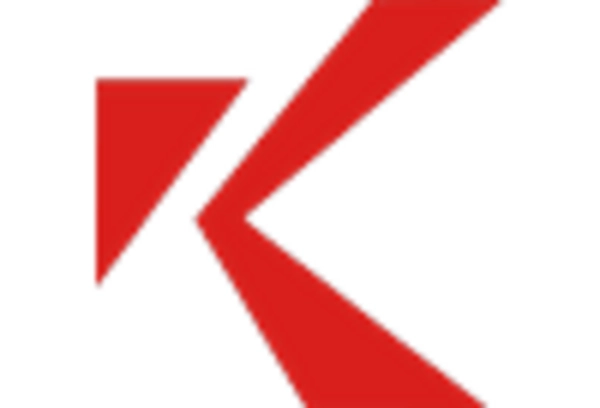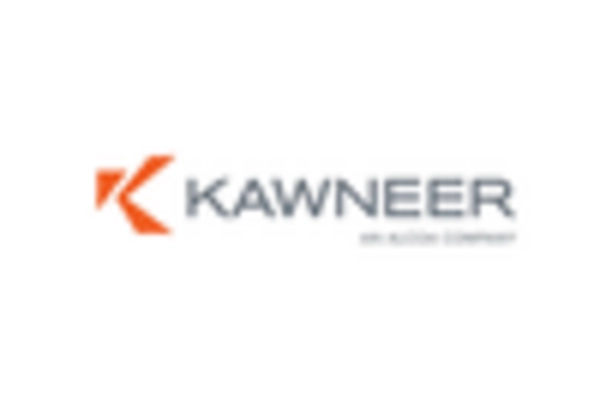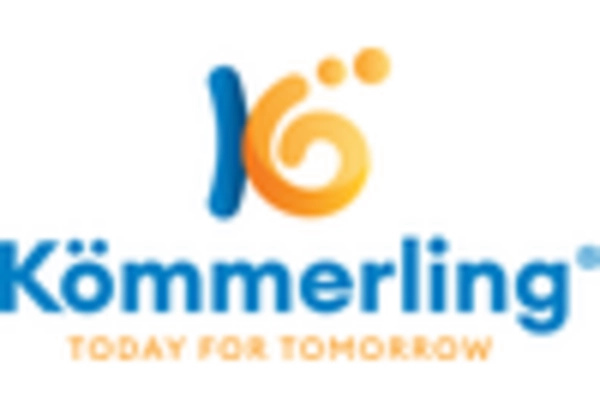Rising Demand for Energy Efficiency
The curtain walls market is experiencing a notable increase in demand for energy-efficient building solutions. As energy costs continue to rise, property developers and architects are increasingly prioritizing materials that enhance thermal performance. Curtain walls, known for their ability to reduce energy consumption, are becoming a preferred choice in commercial and residential projects. In fact, studies indicate that buildings utilizing advanced curtain wall systems can achieve energy savings of up to 30%. This trend is further supported by regulatory frameworks promoting energy efficiency, which are likely to drive the adoption of curtain walls in the construction sector. Consequently, the curtain walls market is poised for growth as stakeholders seek to comply with energy standards while minimizing operational costs.
Government Regulations and Incentives
Government regulations aimed at enhancing building safety and sustainability are playing a crucial role in shaping the curtain walls market. Various federal and state initiatives encourage the use of advanced building materials that meet stringent safety and environmental standards. For instance, the implementation of the International Energy Conservation Code (IECC) has prompted builders to adopt curtain wall systems that comply with energy efficiency requirements. Additionally, financial incentives for green building practices are likely to further promote the adoption of curtain walls. As a result, the curtain walls market is expected to benefit from these regulatory frameworks, which not only enhance building performance but also support the transition towards sustainable construction practices.
Technological Advancements in Materials
Innovations in materials technology are significantly influencing the curtain walls market. The development of lightweight, high-strength materials such as fiberglass and advanced composites is enabling the creation of more efficient and durable curtain wall systems. These advancements allow for larger glass panels and more intricate designs, which are increasingly sought after in modern architecture. Furthermore, the integration of smart technologies, such as automated shading and energy management systems, is enhancing the functionality of curtain walls. As these technologies become more prevalent, they are likely to attract architects and builders looking to incorporate cutting-edge solutions into their projects, thereby driving growth in the curtain walls market.
Aesthetic Appeal and Customization Options
The aesthetic appeal of curtain walls is a significant driver in the market. They offer architects and designers the flexibility to create visually striking facades. The ability to customize curtain wall systems to meet specific design requirements is increasingly valued in the construction industry. This trend is particularly evident in urban environments, where unique architectural designs can enhance a building's identity and marketability. Recent surveys indicate that over 60% of architects consider the visual impact of curtain walls as a key factor in their design choices. As the demand for distinctive and personalized building designs continues to grow, the curtain walls market is likely to expand, catering to the evolving preferences of clients and stakeholders.
Urbanization and Infrastructure Development
Urbanization in the United States is significantly impacting the curtain walls market. As cities expand and populations increase, there is a heightened need for modern infrastructure that accommodates growing urban populations. Curtain walls are favored for their aesthetic appeal and functional benefits, making them ideal for high-rise buildings and commercial complexes. According to recent data, urban areas are projected to account for over 80% of the US population by 2050, necessitating the construction of new buildings that incorporate curtain wall systems. This urban development is likely to stimulate demand for curtain walls, as they provide both structural integrity and design flexibility, aligning with contemporary architectural trends.

















Leave a Comment